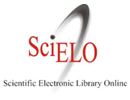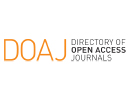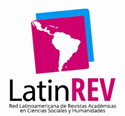Uncovering the unequal access to English language learning in the high schools of the Province of Copiapó
DOI:
https://doi.org/10.21142/DES-1303-2021-0031Keywords:
English language teaching, Chile, Bilingüe, SIMCE, inequality, assessmentAbstract
In 2004, ‘Chile bilingüe’ marked the launch of a system for teaching English in Chile. The goal of this language policy is to provide students with an intermediate profi ciency level upon graduation. Proficiency is measured by the ‘SIMCE de inglés’ national test, with the results indica ting a gap between private and public sector institutions. It is in this context that this article addresses this gap, fo cusing on the issue as revealed by the ‘SIMCE’ results in the province of Copiapó, as well as offering suggestions on how the gap could be narrowed. The methodology emplo yed to conduct this research is a multi-method approach, involving surveys and archival studies. The results indica te a correlation between student numbers, resources and teaching hours, and proficiency results among students. In addition, teachers provide suggestions on how to address the problem. The aim of this study is to suggest ways of making English teaching more equitable, as well as encou raging further research on the topic.
Downloads
References
Agencia de Calidad. (2017). Informe de resultados estudio nacional Inglés. III Medio. 2017. http://archivos.agenciaeducacion.cl/Informe_Estudio_Na- cional_Ingles_III.pdf
Blommaert, J. (2009). A market of accents. Language Policy, 8, 243-259
Bordel, J. (2020, January 26). «No son 30 pesos, son 30 años»: los Chicago Boys y el origen del neoliberalismo en Chile. El Salto. https://www.elsalto- diario.com/america-latina/30-pesos- 30-anos-chicago-boys-origen-neoli- beralismo-chile
Bruthiaux, P. (2002). Hold your courses: Language education, Language choice and economic development. TESOL Quarterly, 36(3), 275-296.
Brutt-Griffler, J. (2005). «Who do you think you are, where do you think you are?»: Language policy and the political economy of English in South Africa. In C. Gnutzmann and F. Intemann (Eds.), The globalization of English and the English language classroom (pp. 27-39). Gunter Narr Verlag.
Byrd, K. (2013). Reactions to English language learning in Chile as a means for personal and national development. [Master’s thesis in International Studies]. https://repository.usfca.edu/thes/57
Cooperativa (June 7, 2013). Simce de Inglés: Los mejores colegios, re- gión por región. https://www.cooperativa.cl/noticias/pais/educacion/ mediciones/simce-de-ingles-los-mejores-colegios-region-por-re- gion/2013-06-07/133223.html
DataChile. (n. d.). Comuna de Copiapó (Atacama). DataChile. https:// es.datachile.io/geo/atacama-3/copiapo-68
De Améstica, C. (August 17, 2013). ¡Oh my God! El fracaso de los planes para enseñar Inglés en los colegios y convertir a Chile en un país bilin- güe. La Segunda Online. http://www.lasegunda.com/Noticias/Nacio- nal/2013/08/872074/oh-my-god-el-fracaso-de-los-planes-para-ensenar- ingles-en-los-colegios-y-convertir-a-chile-en-un-pais-bilingue
Decreto 81. (2004). Decreto 81. Reglamenta programa de fortalecimiento del aprendizaje del idioma inglés en la enseñanza básica y media de los esta- blecimientos educacionales regidos por el decreto con fuerza de ley N.° 2, de 1998, del ministerio de Educación y por el decreto ley N.° 3.166, de 1980. [De- cree 81. Regulate program to strengthen the learning of the English language in the primary and secondary education of educational establishments go- verned by the decree with force of law No. 2, of 1998, of the Ministry of Edu- cation and by decree Law No. 3.166, of 1980]. https://www.bcn.cl/leychile/ navegar?idNorma=226283
Delicio, R. (2009). The role of output in language learning: The Chilean context. Alicanto, 2, 83-95. http://www.revistahumanidades.uda.cl/ publica/020009.pdf
Glas, K. (2008). El inglés abre puertas... ¿a qué? Análisis del discurso sobre la enseñanza del inglés en Chile, 2003-2006. Revista Educación y Pedago- gía, 20(51), 111-122. https://revistas.udea.edu.co/index.php/revistaeyp/ article/view/9900
Goodman, P. (February 22, 2019). The dollar is still king. How (in the world) did that happen? The New York Times. https://www.nytimes. com/2019/02/22/business/dollar-currency- value.html
Harvey, D (2005). A brief history of neoliberalism. OUP.
Harvey, D. (2007). A brief history of neoliberalism. [Conference].
Ibarbe, C. and Pacheco, F. (2020). Unveiling the unequal access to English language learning among private and public secondary schools of Copia- po. [Bachelor thesis, Universidad de Atacama].
La Tercera. (March 24, 2011). Simce de Inglés: El 11% de los alumnos comprende frases cotidianas y textos breves. La Tercera. https:// www.latercera.com/noticia/simce-de-ingles-el-11-de-los-alumnos- comprende-frases-cotidianas-y-textos-breves/
Matear, A. (2007a). Equity in education in Chile: The tensions between policy and practice. International Journal of Education Development, 27(1), 101-113. https://doi.org/10.1016/j.ijedudev.2006.06.015
Matear, A. (2007b). Tensions between State and Market in Chile: Educa- tional policy and culture. European Review of Latin America and Caribbean Studies, (83), 61-82. http://doi.org/10.18352/erlacs.9633
Matear, A. (2008). English language and education policy in Chile: Can English really open doors for all? Asia Pacific Journal of Education, 28(2), 131-147. https://doi.org/10.1080/02188790802036679
McKay, S. (2003). Teaching English as an international language: the Chilean context. ELT Journal, 57(2), 139-148. https://doi.org/10.1093/ elt/57.2.139
Menard-Warwick, J. (2008). The dad in the Che Guevara t-shirt: Narratives of Chilean English teachers. Critical Inquiry in Language Studies, 5(4), 243- 264. https://doi.org/10.1080/15427580802515654
Menard-Warwick, J. (2009). Co-constructing Representations of Culture in ESL and EFL classroom: Discursive faultlines in Chile and California. The Modern Language Journal, 93(1), 30-45. https://doi.org/10.1111/j.1540- 4781.2009.00826.x
Ministerio de Educación. (2009). Objetivos Fundamentales y Conteni- dos Mínimos Obligatorios de la Educación Básica y Media. http://peib. mineduc.cl/wp-content/uploads/2018/05/Objetivos-fundamentales-y- contenidos-mi%CC%81nimos-obligatorios-de-la-educacio%CC%81n- Actualizacio%CC%81n-2009-.pdf
Ministerio de Educación. (2014). Estrategia Nacional de Inglés 2014-2030. Ministerio de Economía, Fomento y Turismo. https://www.economia.gob. cl/wp-content/uploads/2014/03/140307-Documento-Estrategia-Nacio- nal-de-Ingl%c3%a9s- 2014-2030.pdf
Niño-Murcia, M. (2003). «English is like the dollar»: hard currency ideology and the status of English in Peru. World Englishes, 22(2), 121-141. https:// doi.org/10.1111/1467-971X.00283
Ortiz, I. (2010). 25 años del SIMCE. Centro de Investigación y Desarrollo de la Educación.
Pennycook, A. (2004). Beyond mother tongues and access to English. Jour- nal of Language Identity and Education, 3, 145-150.
Ricento, T. (2012a). Language policy, Political theory, and English as a‘global’ language. YouTube. http://www.youtube.com/watch?v=TTPeUoo49H4
Ricento, T. (2012b) Political economy and English as a ‘global’ language.
Critical Multilingualism Studies, 1(1), pp. 30-52.
Rohter, L. (December 29, 2004). Learn English, says Chile, thinking upwardly global. The New York Times. https://www.nytimes.com/2004/12/29/world/ americas/learn- english-says-chile-thinking-upwardly-global.html
TESOL. (2007). Vision statement. https://www.tesol.org/about-tesol/asso- ciation-governance/mission-and-values
The Clinic. (August 28, 2010). Simce go home. The Clinic. https://www.the- clinic.cl/2010/08/28/simce-go-home/
Torrico-Ávila, E. (2016). Discursive construction of the English langua- ge policy implemented in Chile (2003-2010). [PhD thesis, University of Southampton].
Unidad de Currículum y Evaluación. (2011). Fundamentos Bases Curriculares 2011. Educación Básica. Propuesta presentada para aprobación del Consejo Nacional de Educación. Asociación de Profesionales y Técnicos de la Universidad Metropolitana Ciencias de la Educación (UMCE). http://files.aprotec-umce7.webnode.cl/200000765-7f3d981323/ Fundamentaci%C3%B3n%20Bases%20Curriculares%20Ens_Bas_MINED UC_Ago_2011.pdf
Unidad de Currículum y Evaluación. (2019). Bases Curriculares 3° y 4° me- dio. Curriculum Nacional. https://www.curriculumnacional.cl/614/arti- cles-133992_recurso_10.pdf
Downloads
Published
Issue
Section
License

Esta obra está bajo una licencia http://creativecommons.org/licenses/by-nc-sa/4.0/



















